Compared: 2022 Chevrolet Colorado vs. 2022 GMC Canyon
Badges and a couple of features differentiate GM's mechanically identical, midsize pickup trucks.
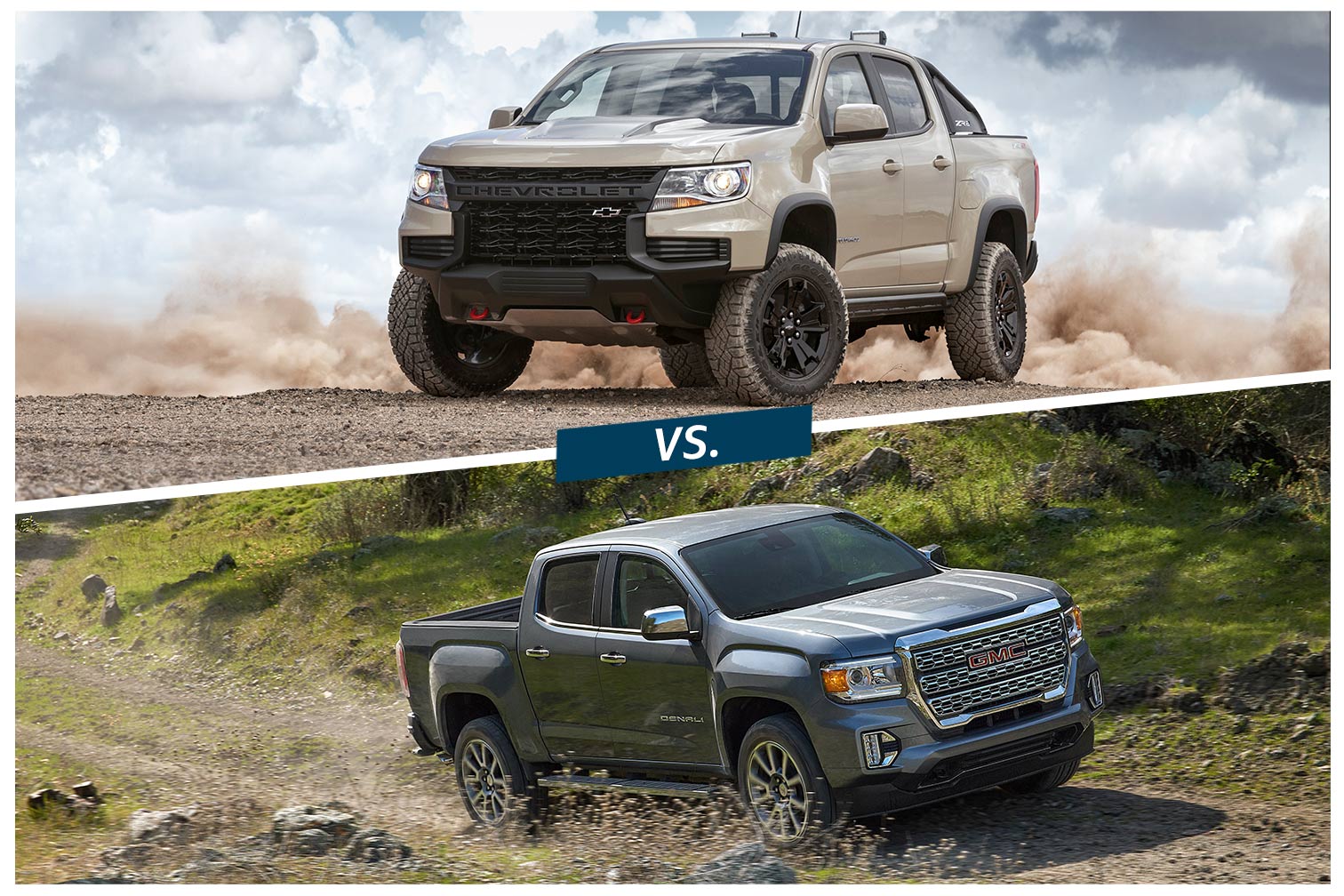 Chevrolet | GMC
Chevrolet | GMC
QuickTakes:
Little separates the 2022 Chevrolet Colorado and GMC Canyon midsize pickups. They ride on the same platform, share engines, and roll off the same Missouri assembly line. In keeping with parent company GM’s brand positioning, the GMC costs a little more and offers a bit more content than the Chevy, but underneath, it’s the same truck. General Motors has redesigned the duo for 2023, but here, we take a look at the final model year of the second generation’s regular production.
 Chevrolet
Chevrolet
Chevrolet Colorado vs. GMC Canyon: Price
The Colorado starts around $27,000 and comes in four trims (WT, LT, Z71, and ZR2) with two bed lengths (62 and 74 inches) and two cab sizes (extended and crew). The base WT has a noisy, 200-hp, 2.5L, four-cylinder engine and a six-speed automatic transmission. For $1,250 more, you can upgrade to the 308-hp, 3.6-liter V6 and an eight-speed automatic. A 181-hp, 2.8L turbodiesel is optional on the midlevel LT and the off-road-oriented ZR2, and offers the most torque (369 lb.-ft.) and the best fuel economy (30 mpg highway for two-wheel-drive models).
 GMC
GMC
Shoppers can spec a Canyon starting around $30,000. GMC offers the same bed lengths and cab sizes on its midsizer as Chevy does. The Canyon’s four trim levels have different names, though: Elevation Standard, Elevation, AT4, and Denali. You can no longer find GM’s entry-level, 2.5-liter four-cylinder in the GMC lineup, which is why the Canyon starts several thousand dollars higher than the Chevy. The Canyon’s base engine is the 3.6-liter V6, while the turbodiesel is available on certain configurations of the Elevation, AT4, and Denali. The AT4 leans rugged, with a lifted suspension, some skid plates, and 31-inch Goodyear DuraTrac tires, but its off-roading performance and hardware fall short of the trail-bombing Colorado ZR2’s.
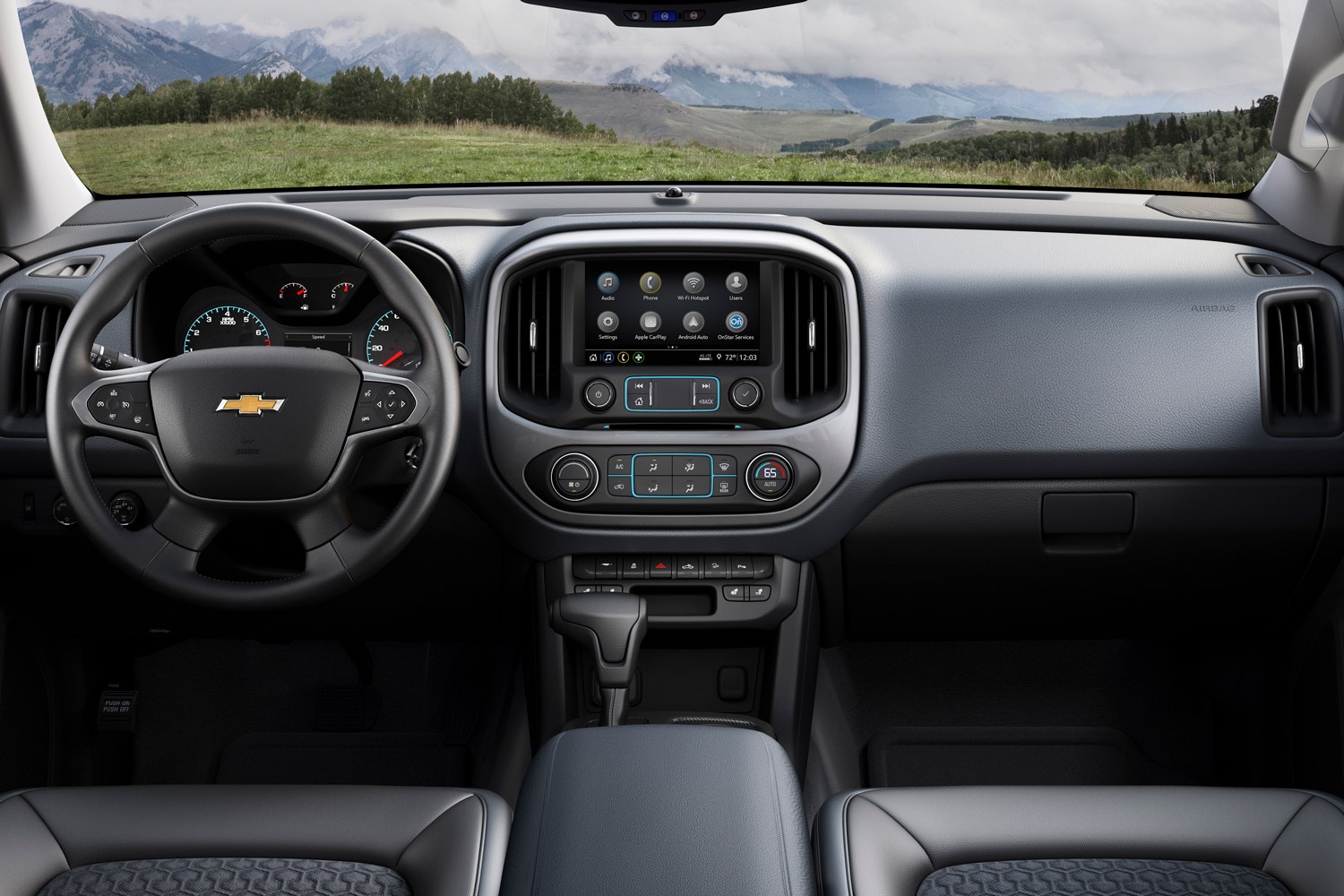 Chevrolet
Chevrolet
Chevrolet Colorado vs. GMC Canyon: Interior
Both trucks seat five occupants in the crew cab and four in the extended cab. The rear seats in the latter look smaller than an airplane’s jumpseats and have only 28.6 inches of legroom, whereas the crew cab’s bench provides 35.8. Design-wise, both interiors are showing their age, especially when compared against fresher rivals like the Ford Ranger and Toyota Tacoma.
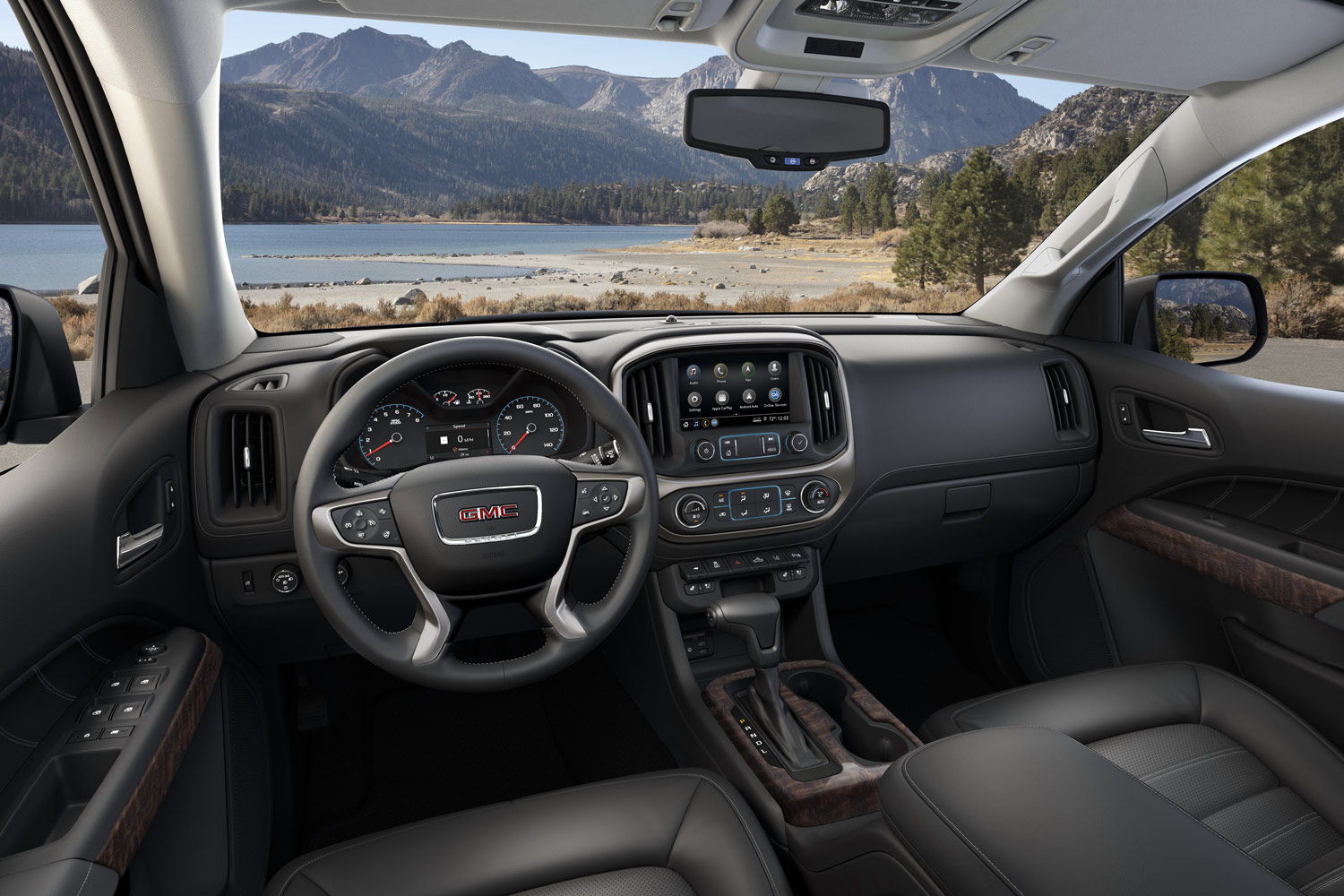 GMC
GMC
Though available to the general public, the Colorado WT and Canyon Elevation Standard are basic trucks meant for fleets. They come with few features (e.g., power windows, a 3.5-inch gauge cluster display, and a 7.0-inch infotainment touchscreen) and limited options, such as floor mats, cruise control, and keyless entry. Those things become standard equipment with the next-step-up Colorado LT and Canyon Elevation, which also boast an 8-inch touchscreen, rear USB ports, and an auto-dimming rearview mirror.
The feature counts increase as you move up the lineups, with the Canyon Denali offering the most standard amenities, including a Bose premium stereo and forward-collision and lane-departure warnings.
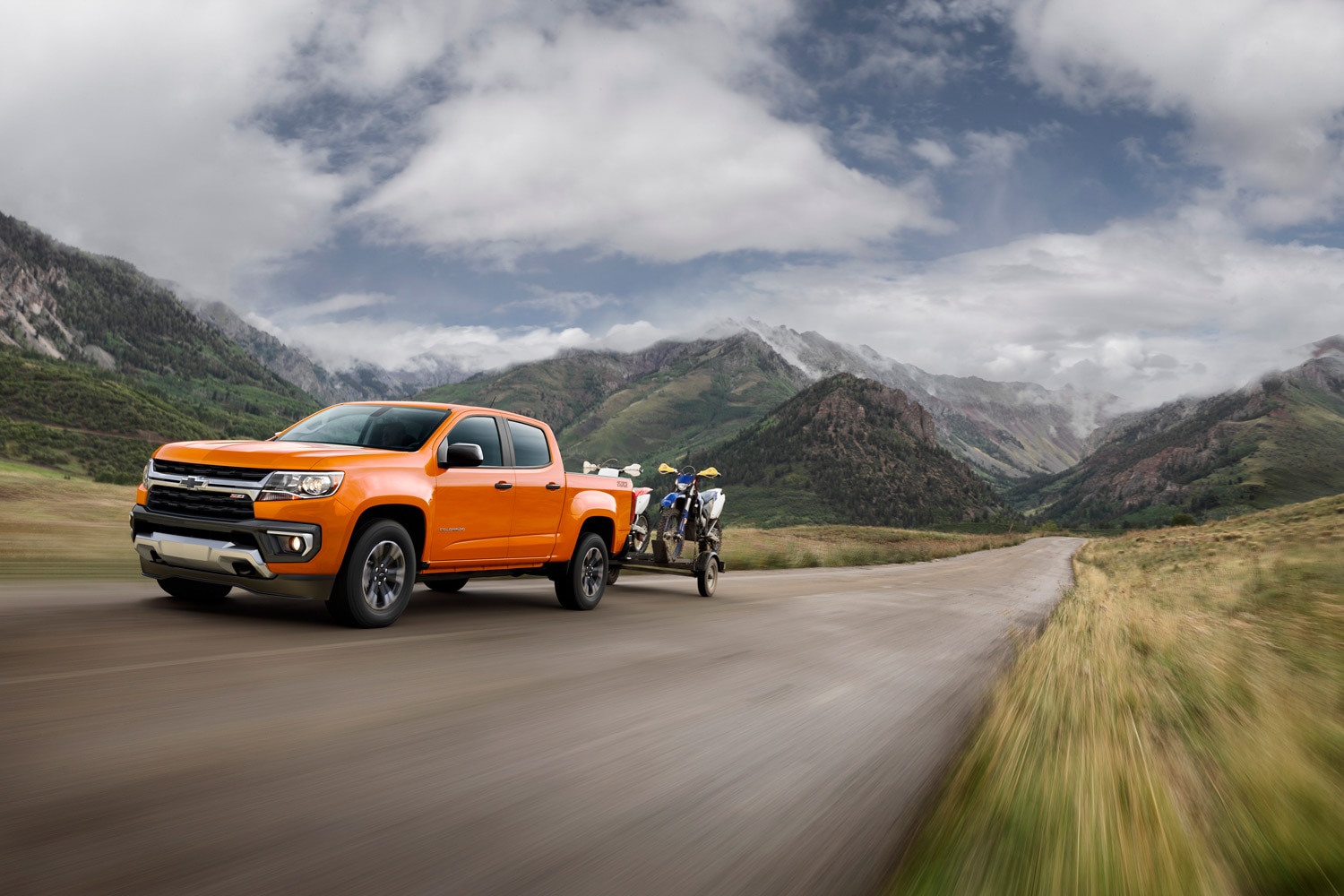 Chevrolet
Chevrolet
Chevrolet Colorado vs. GMC Canyon: Towing and Payload
Maximum towing capacity for the Colorado and Canyon is 7,700 pounds, but you’ll need the turbodiesel. Apart from the ZR2—which boasts a 5,000-pound tow rating—all V6-powered models can tug 7,000 pounds, whereas a base Colorado with the four-cylinder can manage only 3,500.
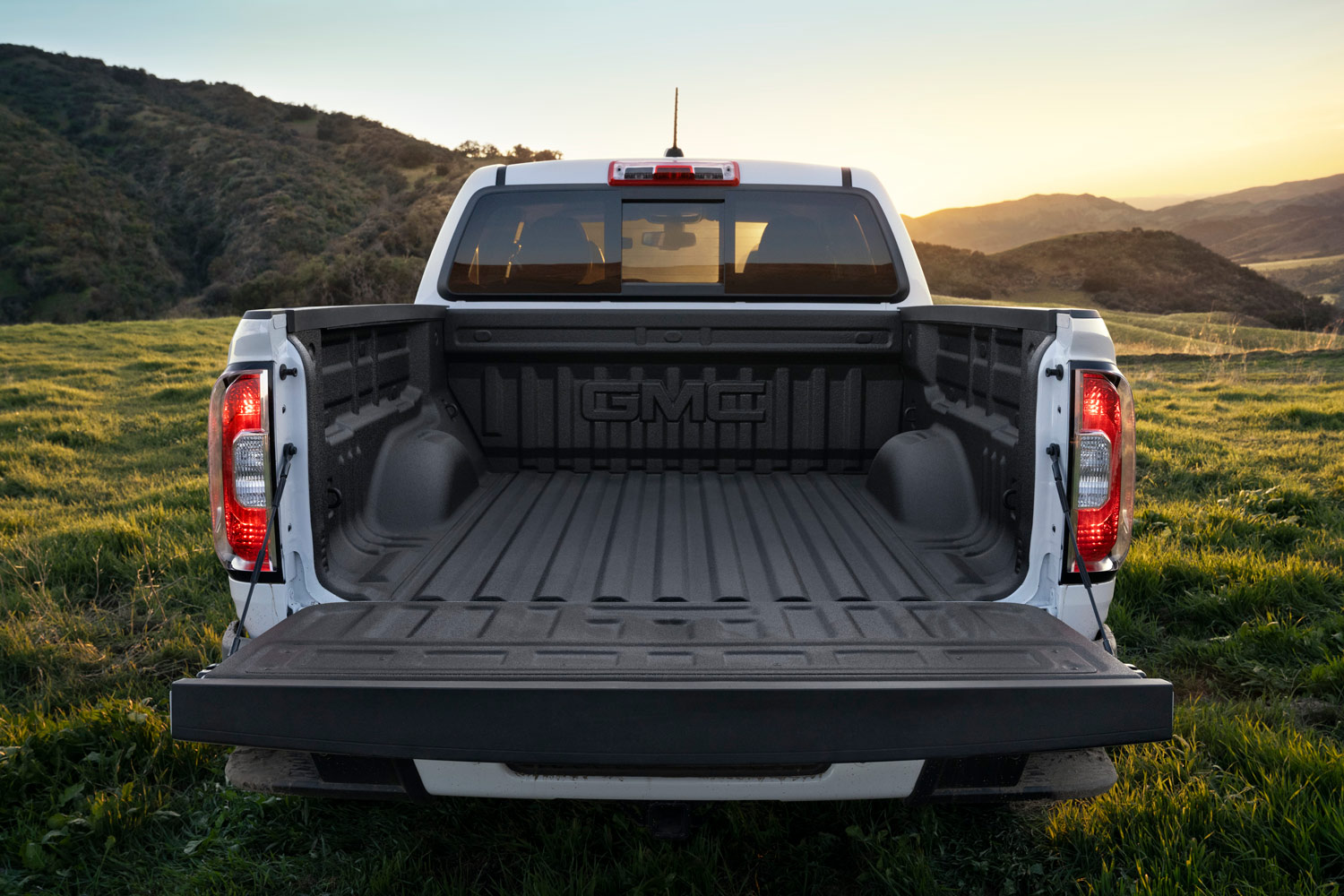 GMC
GMC
The Chevy’s maximum payload is 1,550 pounds, whereas the Canyon’s is 1,570. Those ratings are for V6 crew cabs. Trailer packages are available and come with hitch guidance, which is a backup camera view that displays the hitch and vehicle guidelines to help the driver align the truck with a trailer.
Written by humans.
Edited by humans.
 Clifford Atiyeh
Clifford AtiyehClifford Atiyeh is an independent writer, photographer, and creative consultant. He has reported for dozens of websites, magazines, and newspapers in his 20-year journalism career, during which he has tested more than 650 new vehicles. His automotive expertise focuses on product development, market analysis, and the litigation and legislation affecting the industry. Clifford is vice president of the New England Motor Press Association and runs a marketing consultancy.
Related articles
View more related articles